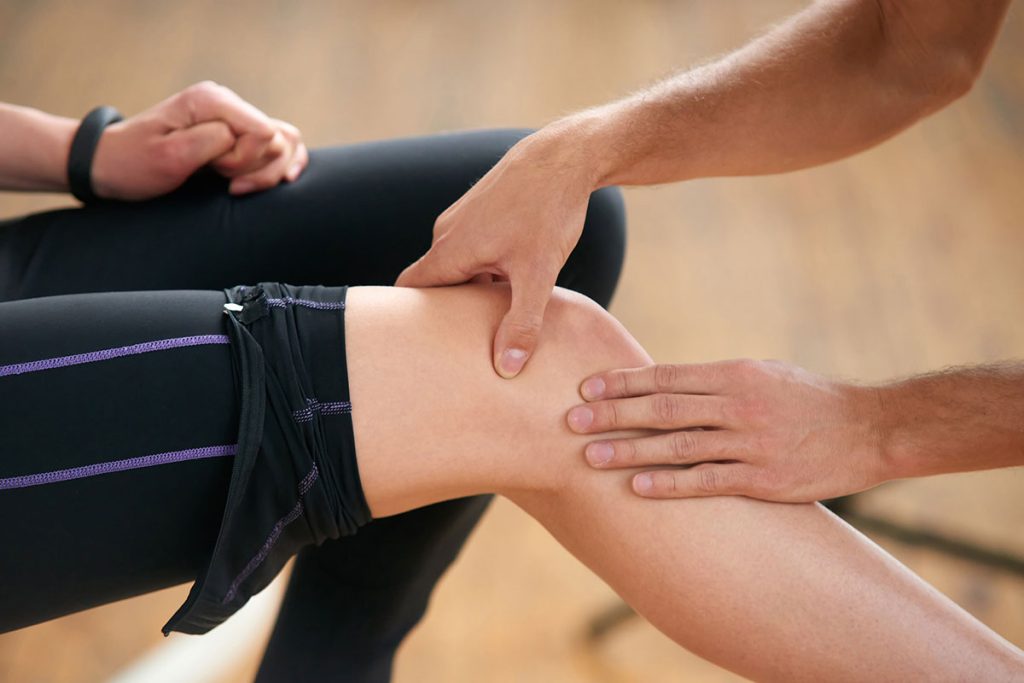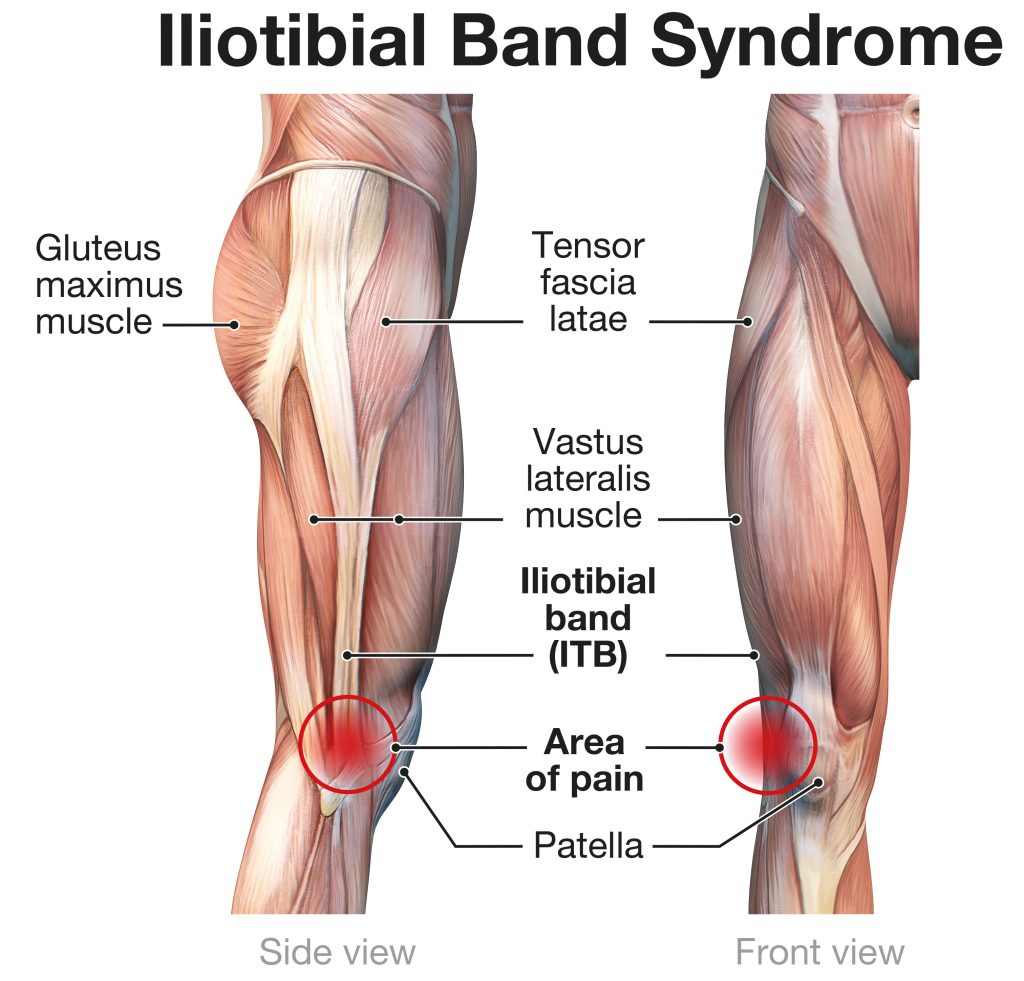On the trail of pain - fit for the finish
As soon as spring arrives, the running season starts in earnest. More and more people are choosing running as an easy way to promote health and because physical fitness also has a positive effect on our psyche.
If you go from zero to one hundred as an amateur runner, you will probably not achieve the desired effect despite your good intentions. If you don’t build up your training, overloading can soon become noticeable, which is then accompanied by pain. If you have knee pain at the latest, you will soon experience what is known as runner’s knee.
What is runner's knee?
Runner ‘ s knee, also known as runner’s knee or patellofemoral pain syndrome (PFSS), is a common overuse injury that occurs primarily in runners and other athletes. It refers to pain around the kneecap (patella) that can be triggered by various causes.
Basically, runner’s knee describes a medical condition known as iliotibial band(friction)syndromeor tractus iliotibialis syndrome . In German, runner’s knee is abbreviated as ITBS, in English it is usually referred to as ITBFS (iliotibial band friction syndrome or iliotibial band syndrome).


What is the iliotibial band?
The iliotibial band is a structure that can withstand very high tensile forces but reacts sensitively to pressure or friction. If the iliotibial band rubs against the outer bony prominence of the thigh when running, the typical symptoms of runner’s knee occur. Runner’s knee can be diagnosed and treated by an orthopaedist.
When does runner's knee cause pain?
We humans have different basic physical requirements (predispositions) that have an effect on walking. Nevertheless, certain patterns can be summarized as deviations from the ideal gait and running pattern. If you have an ideal running style with well-developed muscles on both sides and hip stability, you don’t have to worry too much about runner’s knee – as long as you also incorporate regenerative periods and pay attention to a sensible load build-up.
Symptoms of runner's knee
The following symptoms typically occur with runner’s knee:
- Pain on the front of the knee: especially around the kneecap (patella) or behind the kneecap. The pain can be dull or sharp and is often worse during activities such as running, jumping or climbing stairs.
- Pain during prolonged exertion: The pain can worsen during prolonged sitting with bent knees (such as when driving a car or at the movies). This is often referred to as "cinema seat syndrome".
- Swelling: There may be slight swelling in the knee area.
- Crunching or rubbing: When moving the knee, an audible or palpable crunching or rubbing may occur, especially when walking down the stairs or standing up from a squat.
- Stiffness: A feeling of stiffness or limited mobility in the knee, especially after periods of rest.
- Pain when pressure is applied to the kneecap: tenderness around the kneecap or when pressing on the kneecap.
- Pain during certain movements: Increased pain when bending and extending the knee, especially when weight is applied.

These symptoms can vary and differ in intensity. If such symptoms occur, it is advisable to reduce training and, if necessary, consult a doctor or physiotherapist to initiate appropriate treatment.
Risk factors for runner's knee - iliotibial band syndrome
If we imagine the iliotibial band as a firm elastic band on the outside of the body from the knee to the pelvis, joggers should be careful not to overstretch or overstimulate this “outer band”. This is because strain and repeated friction cause pain in the runner’s knee and are the cause of the problem. As with all sports, certain forces act on the joints when running. Our joints have to withstand these forces, absorb them and cushion them. If there is a deviating moment in our body system, the perfect interplay of joint function, muscles, tendons and ligaments is disrupted. Several factors are therefore partly responsible for the development of runner’s knee.
Causes and risk factors:
- Weak core and gluteal muscles on one side of the body mean that the pelvis is not held on the opposite side.
- If the pelvic side sinks downwards when running, the distance between the outside of the knee and the muscle insertions on the pelvis increases on the side with the weak muscles.
- At the same time, the traction at the base of the iliotibial tract and thus the friction on the outside of the knee joint increases.
- If the runner has a foot malposition, a fallen arches foot or a leg malposition such as genu varum (bow legs), the runner's knee phenomenon is exacerbated.

Do all joggers develop runner's knee?
Runner’s knee generally causes symptoms when overloading and excessive training, so a change in training frequency or a break from sport can already lead to improved symptoms. The straighter your running style, the less at risk you are of developing runner’s knee. The stronger your weaker side becomes, the less likely you are to experience a pull and friction phase with knee pain. And the more well-trained your core muscles and running muscles are, the better protected your knee joint will be.
Prevention of runner's knee
Whether on the treadmill or in the fresh air, running training is still training and requires you to follow rules on training intensity, training volume and recovery phases. The aspects of footwear and running surface should also be taken into account in amateur sport, as this will enable you to create better conditions in advance. The right running shoes for you and a slow approach to running on asphalt are probably the first preventative measures you can take right at the start.
Accompanying strength training is used by professional athletes to improve performance, but also to compensate for imbalances. Imbalances are defined as deviations from the ideal state, in this case incorrect posture when running. Balancing strength exercises are recommended for runners of all levels. This is particularly important for people with known misalignments because they are at greater risk of developing runner’s knee.
What helps prevent runner's knee?
Amateur runners and beginners can work on the following tips to prevent ITBS and runner’s knee (on their own, with sports physiotherapy or sports orthopaedics):
- Improve mechanics in the knee joint: Torso and hip stability, analyze leg axes and optimize movement patterns.
- Recognize the stronger side of the body and strengthen the weaker one: Calves, buttocks, thighs, deep core muscles.
- Build up training slowly: appropriate increase in intensity and training volume with correct recovery times.
- Balance your training: focus on strength, stability and stretching in addition to running training.

In sports orthopaedics, the symptoms of runner’s knee are diagnosed. This means that if you already have knee problems, a specific treatment plan can be drawn up for you. A clinical assessment by the doctor will provide certainty, a diagnosis and a treatment recommendation. Runner’s knee can be mostly not visible by means of conventional imaging make. Increased fluid retention can only be seen on MRI in chronic conditions – therefore a clinical examination by an experienced sports orthopaedist is essential to diagnose this condition.
Treatment of runner's knee | What helps acutely against runner's knee?
If you know that you suffer from runner’s knee and have specific knee pain caused by running, it is advisable to take a break from sport or reduce the amount of running you do. In sports orthopaedics, anti-inflammatory therapy is also used and physiotherapy may also be prescribed. Stabilizing the knee with Kinesio tape can also help the patient to recover quickly. Shock wave therapy is used to treat very severe pain.

If you have made running your favorite sport, a break from sport doesn’t sound inviting. However, it is necessary in acute situations. The running break is used to work on the deficits you have identified (strength, coordination, etc.). Take care of your body so that you do not unnecessarily injure yourself. In any case, you should do without running trainingif:
- the knee pain increases when running.
- the knee pain forces you to run differently (changed style).
- you experience sudden, stabbing pain (as opposed to sore muscles).
Once you have mastered the acute pain situation, think about other longer-term measures that will improve your runner’s knee in the long term. Your sports orthopaedist will provide you with therapy recommendations in every training phase.
Book an appointment with me for a clinical examination in my practice!
